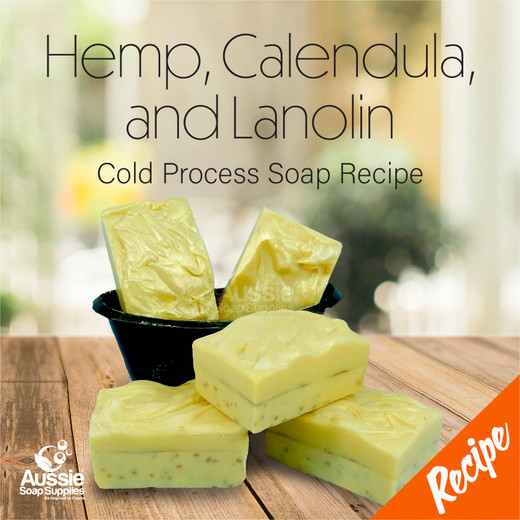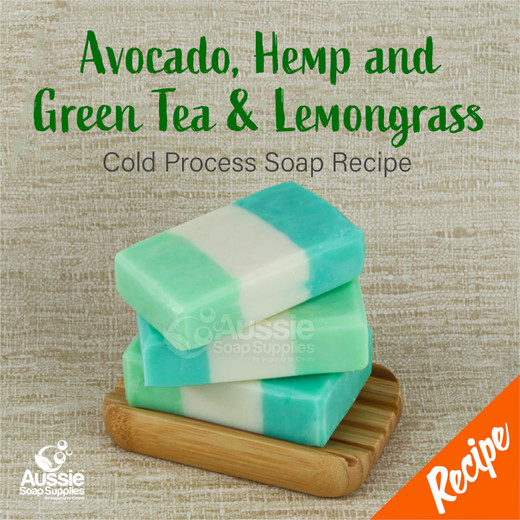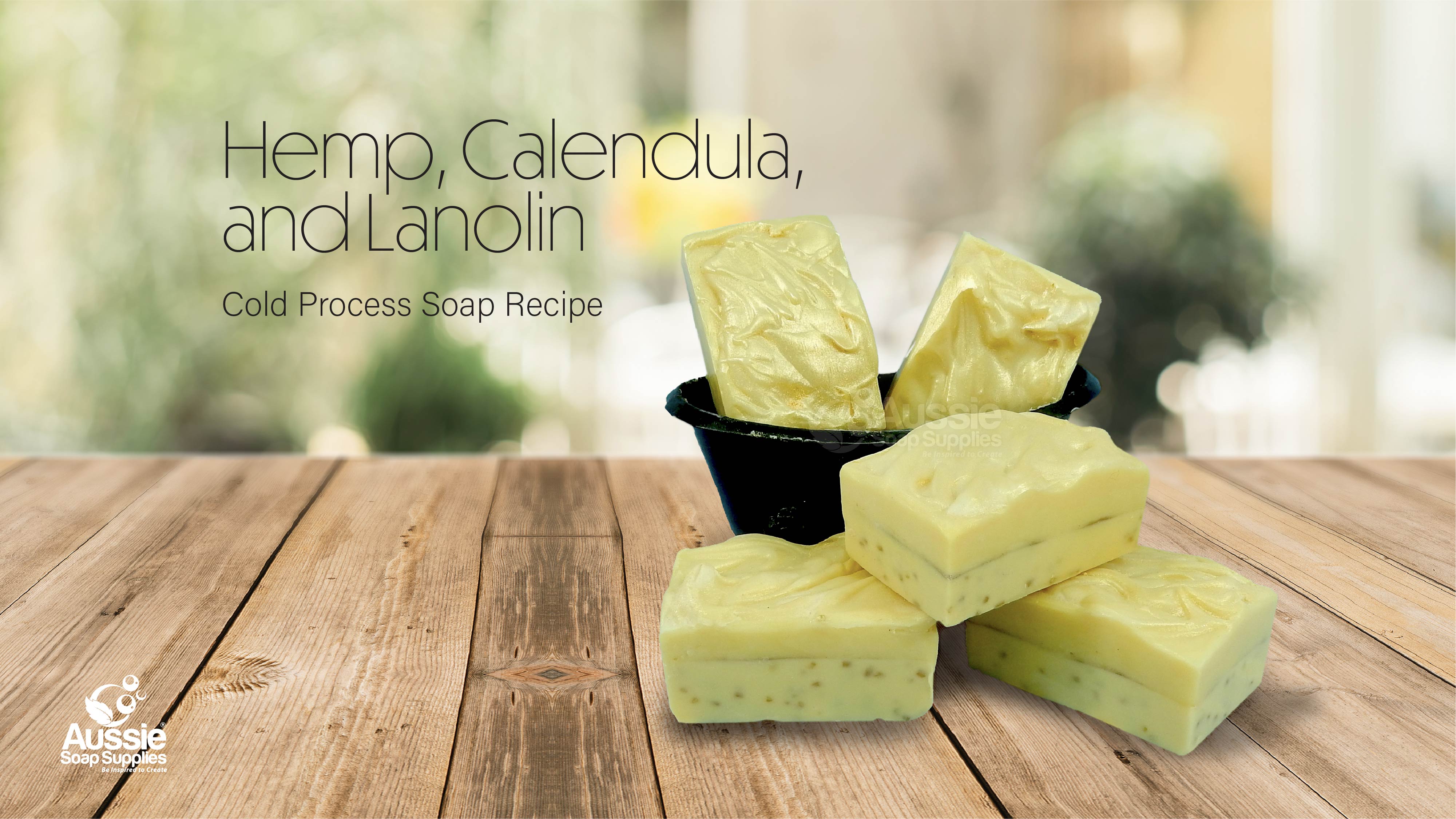
One of my favourite scrubbies to soap with are Steel Cut Oats. These are not available everywhere, but you should be able to find them at your local wholefoods or bulk ingredients store. If you can't find them, use another exfoliant, or for less scrub you can use a regular oatmeal. Steel Cut Oats are chunky, and a pale golden colour, which is perfect for a golden coloured soap.
This soap can be used as a regular skin nourishing exfoliator, or as a garden scrub soap. If your batch of Infused Calendula Oil is pale in colour, which does occur due to seasonal variations in the flowers, you can add some natural Annatto Colourant to deepen that golden colour. This batch is scented with the delicious Energy Fragrance, which is citrussy, fresh, and uplifting - just delish!
What you need:
- 50g Infused Calendula Oil
- 90g Hempseed Oil, Organic
- 300g Coconut Oil
- 150g Palm Kernel Oil
- 310g Rice Bran Oil
- 60g Shea Butter, Organic
- 30g Lanolin
- 280g - 360g Distilled Water - Use the larger amount if you are only just venturing into more advanced soaps
- 145g Sodium Hydroxide (Lye)
- 20g Sodium Lactate Plus
- 100g Ground Pumice Stone - Approximately
- 40g/ml Energy Fragrance
- 1/2 teaspoon Titanium Dioxide - Optional (I wanted the base layer to be a little lighter)
- 100g Steel Cut Oats
- Medallion Gold Mica - To brush the surface on the finished soaps
Equipment:
- All your regular Cold Process Soap making equipment including Safety Gear including Goggles and Gloves
- 2 x 1 litre jugs
- Spatula, stick blender, and your usual soapy equipment
- Small sieve or tea strainer
- Brush if using mica
- 12 Bar Silicone Rectangle Mould
- Large tray or baking sheet to stand the silicone mould on
Method:
If you are a beginner, we recommend you make a few batches before attempting this soap due to the hot gel. For how to make soap from Scratch, please see our Cold Process Soapmaking Instructions. You can also watch Soap Queen's You Tube Series on Cold Process Soapmaking.
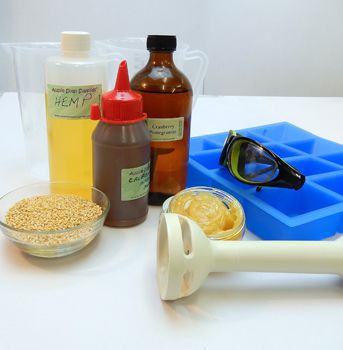
- Set up work bench and measure all the ingredients.
- Place the silicone mould onto the tray so you can tap the mould firmly on the bench during pouring.
- Mix the Titanium Dioxide, if using, in a teaspoon of oil and set aside.
- Set aside the pumice and steel cut oats and bring soap to light trace, don't forget to add the Sodium Lactate Plus.
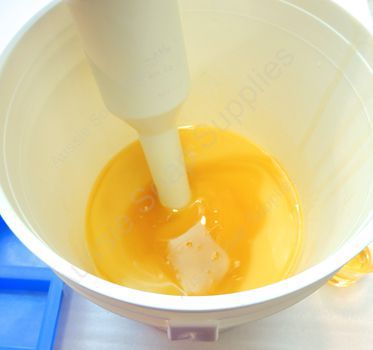
-
Divide lightly traced soap into two even portions in separate jugs.
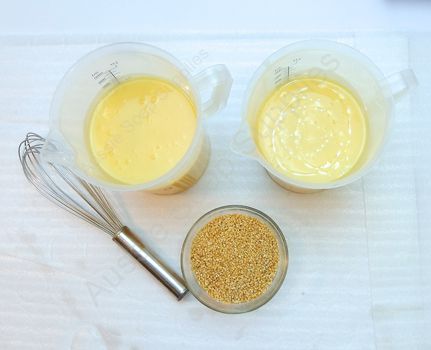
- Add the steel cut oats to one of the jugs and also half of the fragrance.
- Use the balloon whisk to manually stir these through thoroughly.
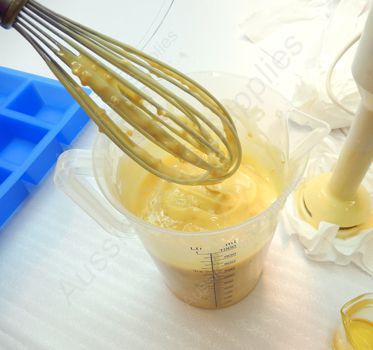
- This will bring the soap to a nice medium trace, and then pour or spoon into the mould cavities.
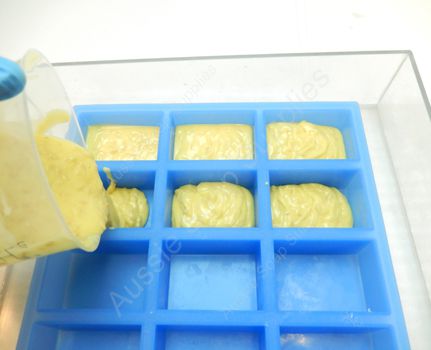
- As the silicone mould is sitting on the tray, tap this firmly onto the work bench to even out the surface and remove any trapped air bubbles.
- Using the sieve, sprinkle the surface of the soaps with a thin layer of ground pumice. This absorbs moisture and leaves a darker, but subtle line on the finished soaps.
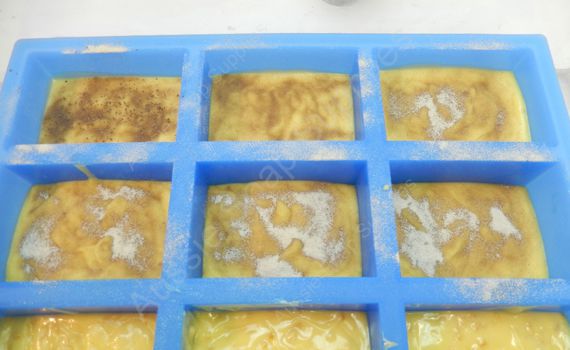
- Add the Titanium Dioxide and the remainder of the Energy fragrance to the second jug of traced soap, and stir to combine well, and then finish filling the mould.
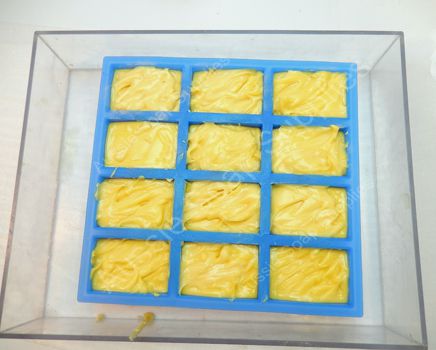
- Insulate and cover to gel phase, and when unmoulded brush with the mica for a golden finish.
Note: You will also need to purchase Olive Oil, Sodium Hydroxide (Lye) and Distilled water from the supermarket.
| Difficulty: | Intermediate |
| Yields: | 10 - 14 bars |
| Time: | 1 hour |
| sale: | No |
| save: | No |


